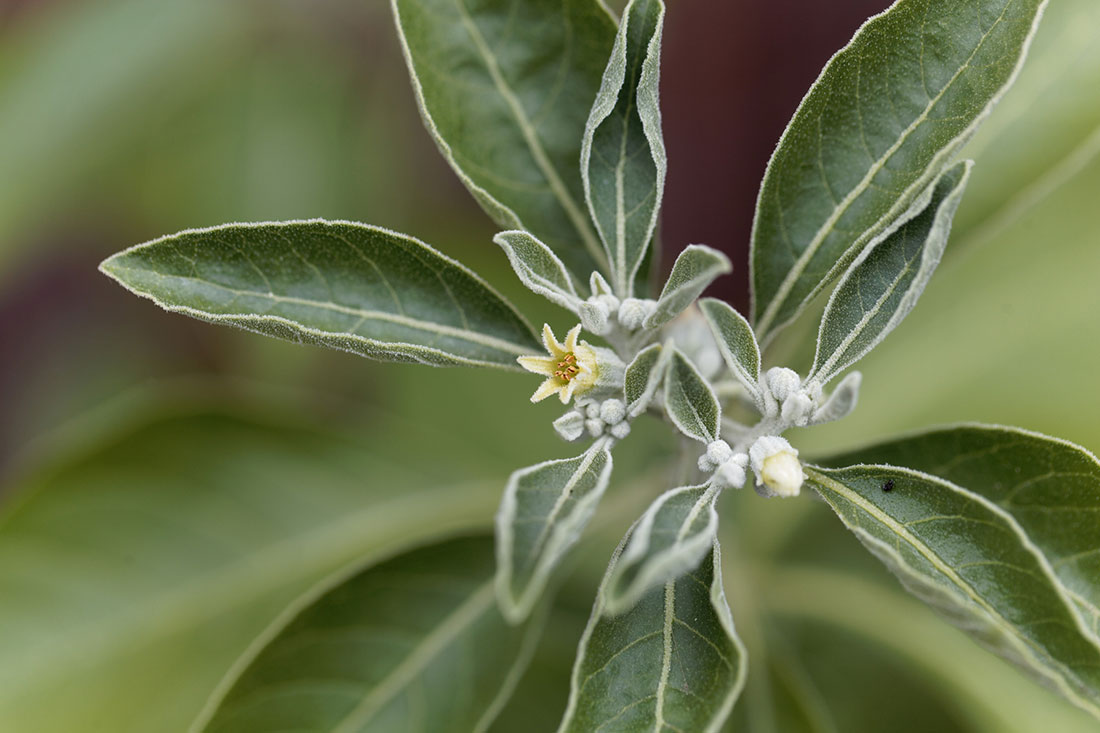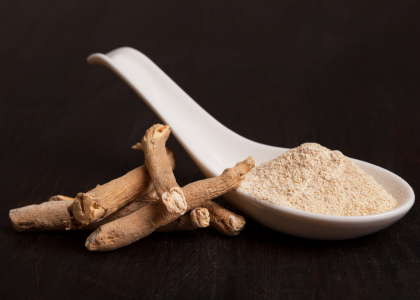
Stress-less
ashwagandha nutraceutical


ashwanovaTM | ProlanzaTM is a long-acting Ashwagandha root extract-based ingredient containing a broad spectrum of 20 Withanolides, 10 of which are USP Standardized. ashwanovaTM | ProlanzaTM’s innovative release pattern enables it to exert its clinical benefits for a prolonged duration with just a single daily dose.
Approximately 75% US adults reported being stressed in 2022 (APA Stress in America™ Survey). The survey found that there was “a battered American psyche, facing a barrage of external stressors.” This survey also showed that 27% of respondents said that most days they are so stressed out they cannot function. Much of this stress stems from excessive worry about the political, global and economic environment.
ashwanovaTM | Prolanza is a long-acting once-a-day adaptogen that addresses life-stress by reducing cortisol levels, thereby reducing the impact of the stressor(s) and promoting better memory recall, accuracy of recall, and sleep improvements. Through supporting healthier stress management, only one 300 mg dose of ashwanovaTM | ProlanzaTM encourages desirable cognitive function by improving memory recall and accuracy under stressed conditions.

ashwanovaTM | ProlanzaTM is a long-acting Ashwagandha root extract-based ingredient containing a broad spectrum of 20 Withanolides, 10 of which are USP Standardized. ashwanovaTM | ProlanzaTM’s innovative release pattern enables it to exert its clinical benefits for a prolonged duration with just a single daily dose.
Approximately 75% US adults reported being stressed in 2022 (APA Stress in America™ Survey). The survey found that there was “a battered American psyche, facing a barrage of external stressors.” This survey also showed that 27% of respondents said that most days they are so stressed out they cannot function. Much of this stress stems from excessive worry about the political, global and economic environment.
ashwanovaTM | Prolanza is a long-acting once-a-day adaptogen that addresses life-stress by reducing cortisol levels, thereby reducing the impact of the stressor(s) and promoting better memory recall, accuracy of recall, and sleep improvements. Through supporting healthier stress management, only one 300 mg dose of ashwanovaTM | ProlanzaTM encourages desirable cognitive function by improving memory recall and accuracy under stressed conditions.

Broad Spectrum of Bioactives
ashwanovaTM | ProlanzaTM has a high concentration (4-5%) of its 10 USP Standardized Withanolides. The ingredient also contains 10 additionally identified Withanolides.

One-A-Day Dosage
A single small dose of 300mg/day is sufficient due to the long-acting biological action and high bioavailability offered by ashwanovaTM | ProlanzaTM.

Clinically Substantiated for Stress Management
ashwanovaTM | ProlanzaTM is clinically proven to provide adaptogenic support for a prolonged period, making it ideal for formulations that efficiently manage all-day stress.

The study examined the efficacy of 300 mg ashwanovaTM | Prolanza capsules versus placebo on cognitive functions, stress levels, sleep quality, and overall well-being using multiple measures.
Compared to placebo, once daily 300mg ashwanovaTM | ProlanzaTM: significantly improved memory, focus, psychological well-being, and sleep quality with notably reduced stress levels.

Compared to the leading Ashwagandha ashwanovaTM | ProlanzaTM showed prolonged availability in blood serum for up to 8-12 hours and

Capsules

Stick Packs

ashwanovaTM | ProlanzaTM ashwagandha nutraceutical significantly reduces serum cortisol levels, implying that it provides support for stress management. It also improves several aspects of sleep.

Our trial has demonstrated that ashwanovaTM | ProlanzaTM increases abilities to perform better in three domains of cognitive skills - visual memory and working and sustained attention.

ashwanovaTM | ProlanzaTM significantly improves psychological well-being, promotes the feeling of calm and happiness, leading to a better overall quality of life.

An additional benefit of ashwanovaTM \ ProlanzaTM is the improvement in sleep quality through efficient management of stress.
 Stress Management Support
Stress Management Support
ashwanovaTM | ProlanzaTM ashwagandha nutraceutical significantly reduces serum cortisol levels, implying that it provides support for stress management. It also improves several aspects of sleep.
 Cognitive Support
Cognitive Support
Our trial has demonstrated that ashwanovaTM | ProlanzaTM increases abilities to perform better in three domains of cognitive skills - visual memory and working and sustained attention.
 Mental Wellbeing Support
Mental Wellbeing Support
ashwanovaTM | ProlanzaTM significantly improves psychological well-being, promotes the feeling of calm and happiness, leading to a better overall quality of life.
 Sleep Support
Sleep Support
An additional benefit of ashwanovaTM \ ProlanzaTM is the improvement in sleep quality through efficient management of stress.
- Food sourced excipients
- Non-GMO
- GMP compliant








